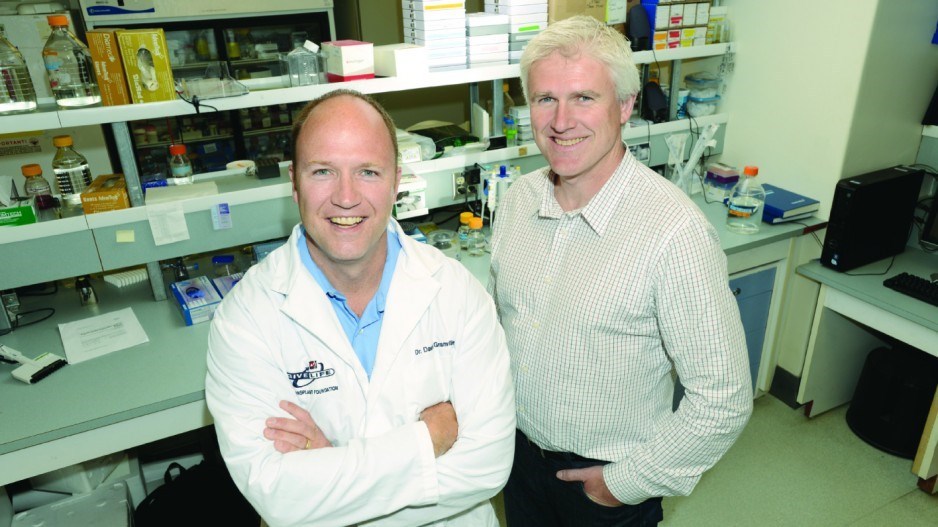When the members of Dave Granville's research team at St. Paul's Hospital were testing a new drug they believed might prevent aneurysms, they noticed that the animals they had been testing the drug on started to look younger.
They realized the drugs they were using to inhibit granzyme B – an enzyme produced by the immune system to target and kill diseased cells – also might be stopping a general degradation of human tissue, including skin, that occurs as a part of aging.
"We discovered that, by inhibiting this enzyme, we were preventing aging of the skin as well," Granville said.
"We were looking at cardiovascular disease, but when we observed the skin effect, it was something quite surprising, but something we couldn't ignore."
Vancouver biotech pioneer Julia Levy – founder of QLT Inc. (TSX:QLT) – brought Granville and Alistair Duncan (co-founder of Agrisoma Biosciences Inc.) together to form viDA Therapeutics Inc., which is now developing a platform of granzyme B inhibitors for a range of diseases.
Granzyme B inhibition might not be the fountain of youth, but it shows promise in slowing down tissue degradation in aging and in a range of autoimmune diseases, like rheumatoid arthritis.
The first drug candidate is an inhibitor that viDA believes could treat a range of skin conditions and diseases, including general aging.
Getting Food and Drug Administration (FDA) approval in the U.S. for treating skin conditions is not nearly as stringent or costly as it is for other diseases, so a dermatological application presents a quicker path to commercialization.
Whereas it can cost in the hundreds of millions to get a new drug through stage 3 clinical trials, Duncan estimates it will only cost $22 million to get through stage 2 trials for a dermatological application.
"If we did this one, compared to doing something cardiovascular, your end-points are years and years of research," Duncan said.
To date, viDA has raised $4.5 million through angel investors, provincial and federal grants and Business Development Bank of Canada venture capital investment.
The company has also attracted some well-known leaders in biotech to its board of directors, including Levy, who chairs the board of directors, Richard Glickman (founder of Aspreva Pharmaceutical Corp., acquired by Galenica Group in 2007 for $915 million) and biotech inventor Michael Abrams, who chairs viDA's science advisory board.
One thing viDA does not have to worry about is competition, because it appears no one else is working in this new field of therapeutics.
"Nobody has ever gone after this enzyme therapeutically to treat any type of disease," Granville said.
Added Duncan, "As we prove out the therapeutic value of inhibiting granzyme B and show proof of concept in the clinic, we see that the technology has the potential to play a role in a number of extremely large markets."
Natural-born killer
Granzyme B has been called a "natural born killer." The enzyme is a key part of the immune system.
When the body is infected, certain immune cells release both granzyme B and perforin (pictured above), which bores a hole in the target cell, admitting granzyme B, which kills the target cell.
It was once thought that only immune cells produced granzyme B, but it's now known that other cells also produce it.
This "extracellular granzyme B" floating freely in body fluids is now believed to be responsible for eating away at the extracellular matrix – a kind of protein scaffold that binds the cells of connective tissue together.
One of these protein products is decorin, which organizes collagen – the protein that keeps skin youthful and healthy. Over the years, granzyme B is believed to eat away at the decorin.
By inhibiting granzyme B, viDA scientists believe they can slow down the aging process in skin tissue.
Elevated levels of granzyme B is also found in the wound fluid of diabetes patients with skin ulcers, as well as in a number of autoimmune and chronic inflammatory diseases – from asthma to Crohn's disease and rheumatoid arthritis.
The company's lead drug candidate – V2248 – is about a year from phase 1 clinical trials and a number of other drugs are in the pipeline.




